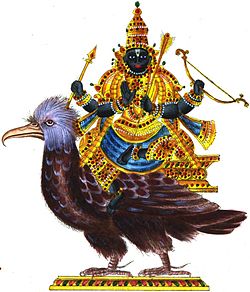Sanskritization
Under the Indian government's encouragement, the officially sponsored version of the Khari-boli dialect has undergone a sea-change after it was declared the language of central government functioning in 1950. A major change has been the Sanskritisation of Hindi (introduction of Sanskrit vocabulary in Khariboli). Three factors motivated this conscious bid to sanskritize Hindi, being:
-
The independence movement inculcated a nationalistic pride in India's ancient culture, including its ancient classical language Sanskrit;
- Independence was accompanied by partition along religious lines, with Muslim-majority areas seceding to form Pakistan, and a partial rejection of Persian and Arabic influence in the Hindu-majority areas; Saadat Hasan Manto, the Pakistani Urdu writer opposed to Hindi-Urdu divide.[15]
- The people of south and east India were averse to the dominance of the language and culture of north India in the affairs of the country. The Hindu populations of these regions did not identify with Hindi itself or with the Mughal (Persian, Turkic) cultural influences that had shaped Hindi, but they were more receptive to Sanskrit. Sanskritization was thus viewed as a means to make Hindi more palatable as a national language. However, in the state of Tamil Nadu, there was strong anti-Brahmin sentiment and the Sanskrit language was associated with the Brahmins; therefore, the opposition to Hindi only became stronger, resulting in anti-Hindi agitations.
In its non-Sanskritized form, the Khariboli-based dialect is the normal and principal dialect used in the Hindi cinema. It is almost exclusively used in contemporary Hindi television serials, songs, education, and of course, in normal daily speech in almost all the urban regions of north India, wherever Hindi is also the state language. The rural dialect varies from region to region.













